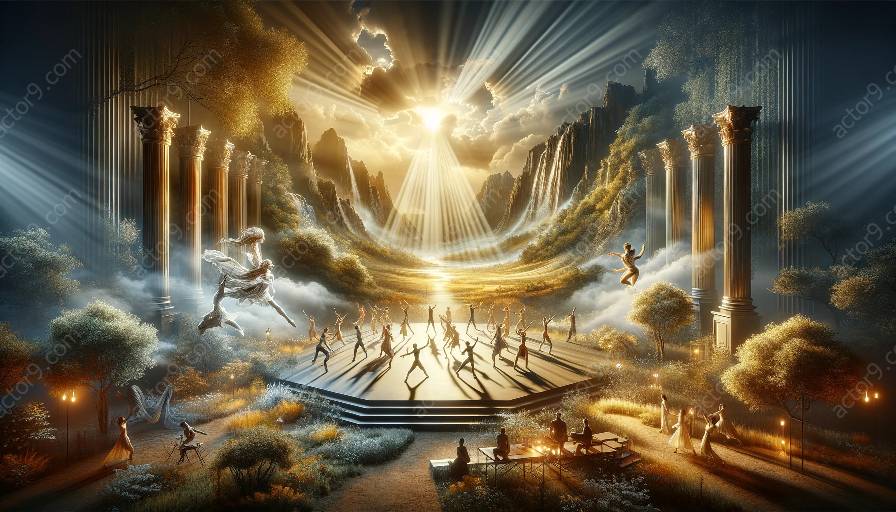Physical theatre, a form of performance that emphasizes the use of the body as a means of expression, relies heavily on the interaction between various theatrical elements to convey its message effectively. One integral element that significantly contributes to the development of character and narrative in physical theatre is lighting design.
Understanding Physical Theatre
Before delving into the role of lighting in physical theatre, it's essential to understand the essence of physical theatre itself. Physical theatre is a theatrical performance that emphasizes physical movement and expression, aiming to convey emotions, narratives, and characters primarily through the body and physical actions of the performers. It often involves minimal or no dialogue, with the visual and physical aspects taking center stage.
Enhancing Character through Lighting Design
The use of lighting in physical theatre can greatly enhance the portrayal and development of characters. Lighting designers work in tandem with performers to create visual atmospheres that complement the characters' emotions and actions, effectively communicating their internal world to the audience. By strategically using lighting techniques such as color, intensity, and direction, a character's journey and motivations can be accentuated and amplified.
For instance, the use of warm, vibrant hues may signify a character's passion and zeal, while harsh, contrasting lighting can reflect inner turmoil or conflict. Lighting can also be used to portray a character's transformation throughout the performance, effectively illustrating their emotional arc and growth.
Shaping Narrative Through Lighting Design
Lighting design plays a pivotal role in shaping the narrative of a physical theatre performance. Through the manipulation of light and shadow, lighting designers can create visual compositions that mirror the narrative's pacing, mood, and thematic elements, offering insight into the unfolding story. By modulating the intensity and angle of light, designers can draw attention to specific characters, actions, or objects, guiding the audience's focus and interpreting the storyline.
Transitioning from subtle, subdued lighting to bold, dramatic lighting can underscore pivotal moments in the narrative, signaling shifts in tone or tension. Additionally, the strategic use of shadow and silhouette can convey underlying themes and subtext, adding layers to the storyline and allowing for deeper audience engagement.
Interactive Choreography of Light and Motion
In physical theatre, the harmonious interplay between lighting and the performers' physical movements creates an immersive and dynamic storytelling experience. As performers move through the performance space, lighting can dynamically adapt to follow their actions, effectively becoming a choreographed element of the performance itself.
Designers utilize moving lights, spotlights, and innovative fixtures to synchronize with the performers' movements, creating captivating visual compositions that mirror the choreography of the human body in motion. This interactive choreography of light and motion adds depth and dimension to the characters' interactions, elevating the narrative and emotional impact of the performance.
Conclusion
It is evident that lighting design plays a crucial and multifaceted role in the development of character and narrative in physical theatre. Through its ability to enhance character portrayal, shape narrative dynamics, and interactively choreograph with the performers' movements, lighting design significantly contributes to the overall storytelling element of physical theatre, enriching audience experiences and amplifying the emotional and narrative depth of performances.




































